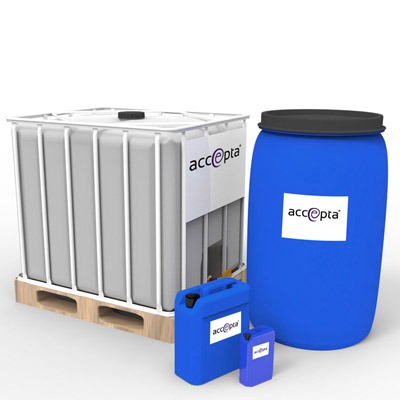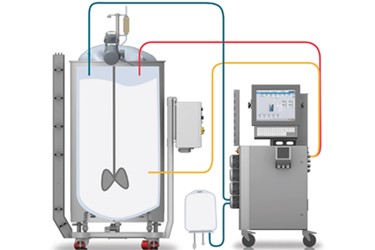Ingenious Foam Control Solutions to Boost Your Production Processes
Ingenious Foam Control Solutions to Boost Your Production Processes
Blog Article
Reliable Strategies for Attaining Optimal Foam Control in Chemical Manufacturing
Effective foam control is an essential aspect of chemical manufacturing that can substantially impact production efficiency and item top quality. By understanding the systems of foam formation and selecting appropriate anti-foaming agents, suppliers can take positive measures to reduce too much foam.
Recognizing Foam Formation

Surfactants, or surface-active representatives, minimize the surface area stress of the fluid, promoting bubble security and advertising foam generation. Furthermore, anxiety or mixing processes can boost bubble development, often exacerbating foam problems. The attributes of the fluid medium, including viscosity and density, additional influence foam behavior; for instance, more thick liquids often tend to catch air extra properly, bring about boosted foam stability.
Recognizing these fundamental facets of foam formation is essential for efficient foam control in chemical manufacturing. By acknowledging the conditions that advertise foam growth, makers can apply targeted strategies to alleviate its adverse results, consequently enhancing production procedures and ensuring constant item high quality. This fundamental knowledge is necessary prior to checking out details methods for managing foam in commercial settings.
Choice of Anti-Foaming Representatives
When choosing anti-foaming representatives, it is vital to think about the certain features of the chemical procedure and the kind of foam being produced (Foam Control). Numerous variables affect the effectiveness of an anti-foaming agent, including its chemical structure, temperature stability, and compatibility with other procedure materials
Silicone-based anti-foams are widely used because of their high performance and broad temperature level array. They work by reducing surface tension, allowing the foam bubbles to integrate and damage even more quickly. Nonetheless, they might not be appropriate for all applications, especially those including sensitive formulations where silicone contamination is a concern.
On the other hand, non-silicone agents, such as mineral oils or natural substances, can be helpful in particular scenarios, particularly when silicone deposits are unwanted. These representatives have a tendency to be less reliable at greater temperatures but can provide reliable foam control in various other conditions.
Additionally, recognizing the foam's beginning-- whether it develops from oygenation, frustration, or chain reactions-- overviews the option procedure. Testing under actual operating conditions is vital to guarantee that the selected anti-foaming agent satisfies the special requirements of the chemical production process successfully.
Refine Optimization Methods
Efficient foam control is a vital facet of optimizing chemical production processes. To enhance effectiveness and lessen production prices, makers should implement targeted procedure optimization techniques. One crucial technique entails adjusting blending speeds and arrangements. By fine-tuning these parameters, drivers can decrease disturbance, thus minimizing foam development during blending.
Furthermore, regulating temperature level and pressure within the system can dramatically affect foam generation. Lowering the temperature level may lower the volatility of specific parts, bring about lowered foam. Also, preserving optimum stress levels helps in alleviating too much gas release, which contributes to foam security (Foam Control).
One more reliable approach is the tactical addition of anti-foaming agents at essential phases of the procedure. Mindful timing and dose can make sure that these representatives successfully subdue foam without interfering with various other procedure specifications.
Moreover, integrating a methodical assessment of basic material residential or commercial properties can help identify naturally frothing compounds, permitting preemptive procedures. Finally, carrying out routine audits and process reviews can disclose inadequacies and locations for renovation, making it possible for continual optimization of foam control methods.
Surveillance and Control Solution
Tracking and control systems play a vital duty in keeping optimum foam monitoring throughout the chemical manufacturing process. These systems are important for real-time observation and change of foam degrees, ensuring that manufacturing performance is taken full advantage of while lessening disruptions triggered by excessive foam development.
Advanced sensors and instrumentation are used to detect foam density and height, providing crucial data that educates control formulas. This data-driven strategy permits the timely application of antifoaming representatives, making sure that foam degrees stay within acceptable restrictions. By incorporating surveillance systems with process control software application, manufacturers can execute automatic reactions to foam variations, lowering the demand for manual intervention and boosting functional consistency.
In addition, the combination of machine discovering and anticipating analytics into monitoring systems can assist in aggressive foam administration. By analyzing historic foam information and functional parameters, these systems can anticipate foam redirected here generation patterns and suggest preemptive steps. Regular calibration and maintenance of surveillance devices are necessary to ensure precision and reliability in foam discovery.
Ultimately, reliable tracking and control systems are vital for maximizing foam control, advertising security, and improving general performance in chemical manufacturing settings.

Study and Ideal Practices
Real-world applications of surveillance and control systems highlight the importance of foam management in chemical production. A significant situation research study involves a large pharmaceutical producer that carried out an automated foam discovery system.
One more exemplary situation originates from a petrochemical business that embraced a mix of antifoam agents and procedure optimization methods. By examining foam generation patterns, the company tailored its antifoam dose, causing a 25% decrease in chemical use and considerable cost savings. This targeted approach not just lessened foam interference yet additionally improved the overall security of the manufacturing process.

Final Thought
Finally, achieving optimum foam control in chemical production necessitates an extensive method encompassing the option of appropriate anti-foaming agents, implementation of procedure optimization methods, and the combination of advanced surveillance systems. Normal audits and training even more view enhance the performance of these methods, fostering a culture of constant enhancement. By dealing with foam development proactively, producers can dramatically boost manufacturing effectiveness and product quality, ultimately adding to even more cost-efficient and lasting procedures.
By recognizing the systems of foam formation and choosing proper anti-foaming agents, manufacturers can take proactive procedures to alleviate excessive foam. The qualities of the linked here fluid medium, consisting of viscosity and density, more impact foam habits; for example, more viscous liquids tend to trap air a lot more effectively, leading to boosted foam security.
Comprehending these basic facets of foam formation is crucial for reliable foam control in chemical production. By evaluating historical foam data and functional criteria, these systems can forecast foam generation patterns and recommend preemptive procedures. Foam Control. Normal audits of foam control gauges ensure that processes remain enhanced, while promoting a society of aggressive foam monitoring can lead to lasting improvements across the manufacturing spectrum
Report this page